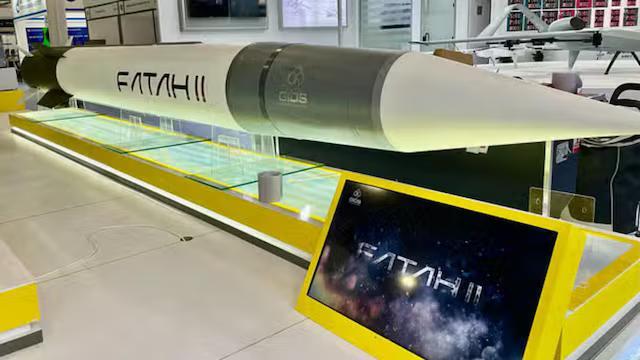
What is Fatah-II missile Pak reportedly fired towards India?
In a recent escalation of tensions between India and Pakistan, Pakistan reportedly fired a Fatah-II missile towards Delhi, which was intercepted and destroyed by India in Haryana’s Sirsa district. The incident has sparked concerns about the increasing militarization of the region and the development of advanced missile technology by Pakistan.
But what exactly is the Fatah-II missile, and what capabilities does it possess? In this blog post, we will delve into the details of the Fatah-II missile and explore its implications for regional security.
What is the Fatah-II missile?
The Fatah-II is a hypersonic ballistic missile developed by Pakistan, with a range of up to 400 km (250 miles). It is designed to have an advanced guidance system and a flat ballistic trajectory, which allows it to evade radar detection and interception. The missile is capable of carrying conventional warheads and can strike radar installations and logistics facilities.
The Fatah-II missile is part of Pakistan’s efforts to develop a robust missile defense system, which includes a range of ballistic and cruise missiles. Pakistan has been investing heavily in its missile program in recent years, with the aim of developing a deterrent capability that can counter India’s military superiority.
Capabilities of the Fatah-II missile
The Fatah-II missile has several advanced capabilities that make it a formidable weapon system. Its hypersonic speed, which can reach up to Mach 5 (5 times the speed of sound), makes it extremely difficult to intercept. The missile’s advanced guidance system uses a combination of inertial and terrain reference systems to ensure accurate targeting.
The Fatah-II missile’s flat ballistic trajectory allows it to evade radar detection, making it a challenging target for air defense systems. Its ability to carry conventional warheads means that it can be used to strike a range of targets, including military installations, logistics facilities, and even civilian infrastructure.
Implications of the Fatah-II missile
The development and deployment of the Fatah-II missile by Pakistan has significant implications for regional security. The missile’s capabilities pose a significant threat to India’s military superiority, which has been a key factor in the country’s national security strategy.
The Fatah-II missile also raises concerns about the potential for a conventional conflict between India and Pakistan. The missile’s ability to strike at Indian radar installations and logistics facilities could significantly disrupt India’s military operations, making it a key target for Pakistani forces.
Furthermore, the development of the Fatah-II missile highlights the increasing militarization of the region, which is driven by the ongoing rivalry between India and Pakistan. The two countries have been engaged in a bitter conflict for decades, and the development of advanced missile technology is a key aspect of their military competition.
India’s response
India’s response to the Fatah-II missile has been swift and decisive. The Indian military has reportedly intercepted and destroyed the missile, using its advanced air defense systems to neutralize the threat. The incident highlights the importance of India’s missile defense systems, which are designed to counter the threat posed by Pakistan’s missile arsenal.
India’s response has also been seen as a demonstration of its military capabilities and its willingness to defend its interests. The incident has been widely reported in the Indian media, and has sparked a national debate about the need for a robust missile defense system to counter the threat posed by Pakistan.
Conclusion
The Fatah-II missile is a significant development in the arms race between India and Pakistan. Its advanced capabilities pose a significant threat to India’s military superiority, and its deployment has significant implications for regional security.
The incident highlights the increasing militarization of the region, and the need for a robust missile defense system to counter the threat posed by Pakistan’s missile arsenal. India’s response has demonstrated its military capabilities and its willingness to defend its interests, and has sparked a national debate about the need for a robust missile defense system.
As the situation continues to unfold, it is clear that the Fatah-II missile is a game-changer in the region. Its development and deployment have significant implications for regional security, and will likely continue to shape the dynamics of the India-Pakistan rivalry in the years to come.
Source:



